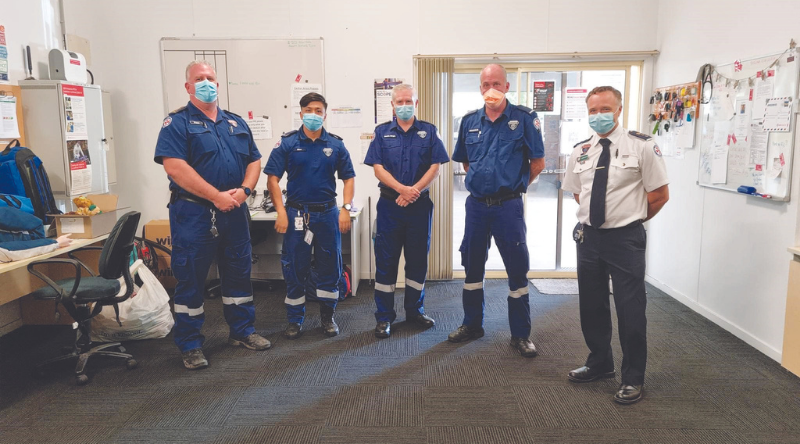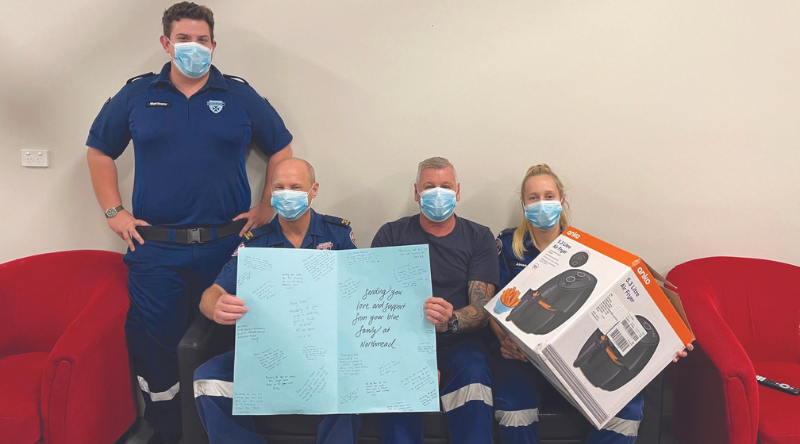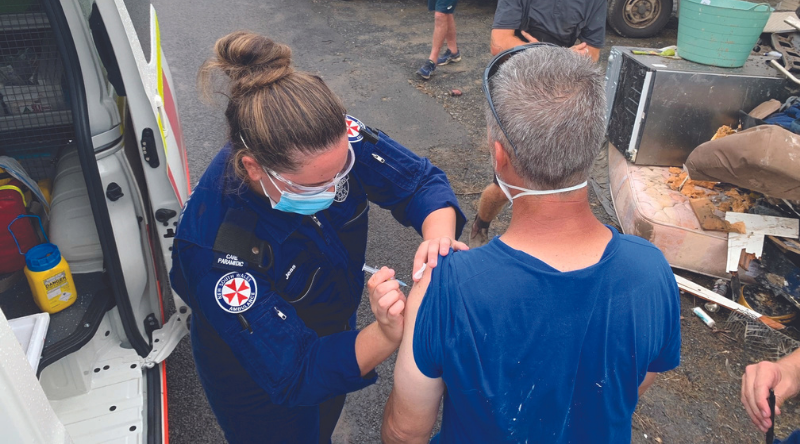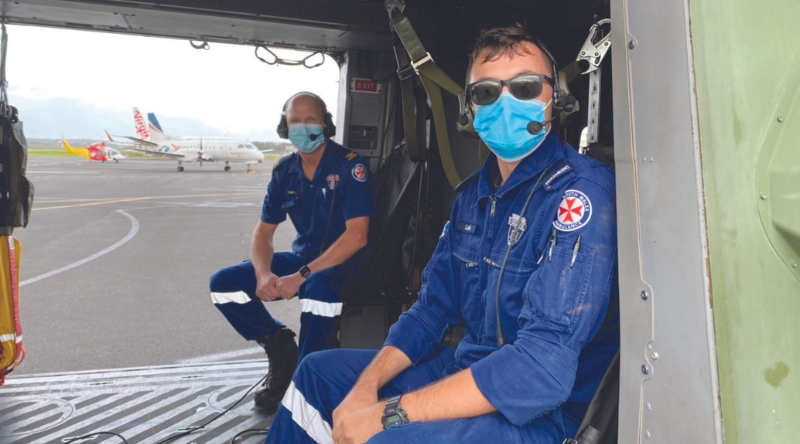
For many of our staff, and in particular our colleagues who live and work in the North Coast, it feels like the rain is never-ending.
But with a bit of luck – something our frontline workers would welcome with open arms, given the challenges of the past couple of years – the rain will stop and the days will become a little brighter than what we have experienced in the past six or so weeks.
There is one thing however that won’t stop with the rain: the ongoing support for staff who have suffered in one way or another during these floods.
In March we highlighted the incredible efforts of different parts of our organisation to pull together as one to support flood-affected staff, their families and their patients.
The immediate response from NSW Ambulance was crucial, collaborative and well organised.
But mid to long-term continuity of that response – and in particular, the recovery phase – is just as important when you are talking about a natural disaster as devastating as this one has been.
Among the priorities is the welfare and support of flood-affected staff.
Director Staff Health, Megan Kingham, said Staff Psychologists, Peer Support Officers and Chaplains have played a critical, ongoing role during the floods – and particularly in the North Coast.
“In the beginning, the most important thing was making sure people were alive, and that they had food and shelter,” Megan said.
“The welfare cell of the North Coast IMT was instrumental in this.

“Once everybody’s safety was assured and local sector (in the North Coast) had an idea of who was where and what they needed more immediately, our role from a Staff Health point of view was to find resources for them, recognising we couldn’t go in to help at this stage.
We had to figure out what support we could provide more remotely and connect them more broadly.
“As an example, this included connecting staff and their families to the Employee Assistance and Psychological Services (EAPS) program. For more direct support we still had our Psychologists, Chaplains and Peer Support Officers available.”
Megan said that once it was safe to be deployed, there was a rotating roster of NSW Ambulance Psychologists and Chaplains who went to the North Coast – that deployment plan is still in place today.
“It’s important for us to also support the people who aren’t necessarily without a home,” she said.
“We’ve got to continue to support the sector. This includes the IMT up there on the North Coast, who have worked for a period that has seemed endless… they have needed support too.”
Megan said the medium to long-term recovery plan that comes next will continue to see resources deployed to the North Coast.
“I think the message is we are still going to be around and available,” she said.
“People need to tell their stories but they also need to know support isn’t just for the early phases.
“You can’t assume everyone will react the same way and along the same timeline, because people’s needs are different.
We have to be really aware what people need and when they need it.”

And it’s not just staff health support which has and continues to be a critical component of recovery for this flooding event.
A dedicated team, consisting of staff from Assets & Infrastructure, have been working behind the scenes to ensure restoration and repairs to flood-affected NSW Ambulance buildings and infrastructure.
Overseen by State Ambulance Recovery Coordinator (SARC) Peter Elliott, there has been a steady list of tasks being worked on to get flooded and stormwater-affected stations and bases fully functioning again.
Lismore, Mullumbimby, Murwillumbah, Maclean, Casino, Balgowlah and Narrabeen, are some of the stations being assessed or already undergoing repairs, along with the Lismore Helicopter Base (which is currently operating out of Ballina Airport).
“Lismore Ambulance Station is the main focus,” Peter said.
“We’ve been looking for a suitable site that is well above the floodplain and that can enable us to build a new station.
“We are also assessing the options for Mullumbimby Station and how to protect the station from the ingress of flood water in the future.”
It’s also the little things that have had a big impact.
Peter recently visited Southern Cross University – the temporary site for Lismore Station, which is also providing temporary accommodation for some of our paramedics.

State Operations Controller (SOC) Wayne McKenna is another.
He too has been in awe of how others have pulled together to help their fellow colleagues.
“People have been driving up to the North Coast from stations that are miles away,” he said.
“Some have come from the Mid-North Coast with food, toasters, kettles and other items that offer support.”
Along with the NSW Ambulance Severe Weather IMT, IMTs in the North Coast, Western Sydney Nepean Blue Mountains, Hunter New England and Aeromedical sectors have provided ongoing support, when required, since the floods began.
Southern and Central Coast North Sydney Sectors have also offered support to a number of affected staff.
Aeromedical Operations, Special Operations Teams, the Virtual Clinical Care Centre, and on-road Paramedics and Control Staff have also played major support roles for affected colleagues.
In a show of the service’s commitment to assisting local communities with their recovery efforts, Paramedic crews were deployed by helicopter to the Northern NSW communities of Iluka, Casino and Evans Head – which have been geographically isolated by road due to flooding – in order to maintain adequate service delivery to those areas.
And another notable feature of the recovery phase – which has been of significant benefit to the local communities – has been the deployment of Extended Care Paramedics (ECPs) to the North Coast.
“NSW Ambulance was able to quickly mobilise a group of ECPs never sent on a deployment before,” Wayne said.
“It was important that we were able to set up recovery during the response phase.
“The ECPs were an example of this, having provided much needed medical support to people in the community who may not have been able to access it elsewhere at the time.”
